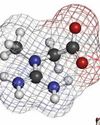
Blood is normally liquid and exists in our blood vessels, namely our arteries and veins. Its function is to deliver life-giving oxygen and nutrients to all cells in our body via the arteries, and to remove metabolic cellular waste products by way of our veins. Unbeknownst to many, blood also has a solid function - where it turns from liquid to solid a.k.a. blood clot.
An example of normal clot formation is whenever someone sustains a cut injury. Bleeding is caused by the transection of blood vessels, normally the smallest ones called capillaries in flesh wounds, or sometimes, in major arteries/veins in severe injuries. Bleeding may stop when the coagulation cascade within our blood is initiated and liquid blood becomes a clot to plug the cut vessels. However, if clot forms within an otherwise normal blood vessel, it is almost always abnormal.
DEEP VEIN THROMBOSIS (DVT)
Deep vein clots or deep venous thrombosis (DVT) afflict about 1 in 10,000 people annually. Standard of care treatment is blood thinners or anti-coagulation medications. This is to prevent propagation (growth) of the thrombus (clot) and embolism (breaking off and dissemination into blood stream). If a large DVT from the leg or pelvic veins dislodges and travels to the heart and lungs (called a pulmonary embolus or PE), it can lead to life-threatening heart dysfunction or even death. Hence, the acute phase treatment of DVT in the first 2-3 weeks is to prevent propagation and embolisation.
Bu hikaye PRIME Singapore dergisinin February - March 2024 sayısından alınmıştır.
Start your 7-day Magzter GOLD free trial to access thousands of curated premium stories, and 9,000+ magazines and newspapers.
Already a subscriber ? Giriş Yap
Bu hikaye PRIME Singapore dergisinin February - March 2024 sayısından alınmıştır.
Start your 7-day Magzter GOLD free trial to access thousands of curated premium stories, and 9,000+ magazines and newspapers.
Already a subscriber? Giriş Yap

Ceasing the Suffering
Discover Long-Standing Relief from Chronic Pains Without Surgery. (No, It is Not TCM!)

Tackling A New Job
Navigating Mid-Career Change: Effective Resume Writing Tips

Fight Off Fatigue
Chronic Fatigue: Is Hormonal Disharmony Draining Your Energy?

Are You Inflamm-Ageing?
How Your Favourite Festive Foods Are Secretly Causing Inflammation and Ageing You Faster

Lesser. Better.
The Advent of the Four-Day Workweek

Allied in Health
The Healthy Melody Seminar Experience - Sharing the Journey

CREATINE
The Compound That Drives Your Muscles and Health

Crispy Crunchy Chewy Temptations
A Guide to Healthy Festive Snacking - Part 2

A Hiro's Welcome
Veteran Japanese Star Hiroyuki Sanada Finally Rises to the Top of Hollywood with Shōgun

Mercury Rising
Understanding the Impact of Heatwaves on Health